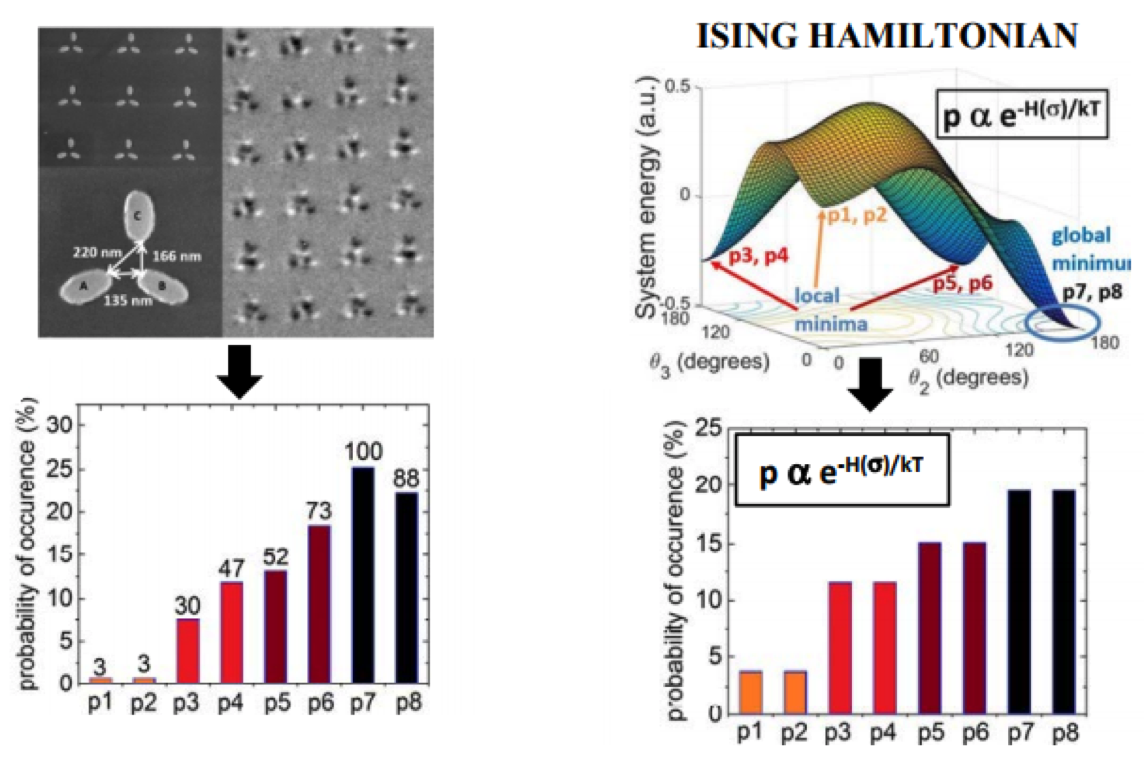Research
Research » Spin Logic » Probabilistic Computing
As conventional CMOS transistors switches are reaching their scaling limits, novel computing paradigms and architectures are considered to be the path forward in the semiconductor industry. In this regard, spin-devices provide natural advantages over conventional CMOS devices for non-volatility in logic devices, bio-inspired computing, probabilistic computing etc.
One such important computing paradigm is Probabilistic Computing used for generating knowledge from "big data" and guiding decisive actions. Nanomagnet based devices have been proposed as hardware building blocks for probabilistic computing because of their natural ability to make probabilistic choices between binary states. In our group, we have demonstrated how weak dipolar coupling can be used to manipulate the probability distribution of nanomagnet networks. By comparing experimental results with the solution of the associated Ising Hamiltonian, we have shown that the nanomagnet network is a physical implementation of that Ising network and produces the ground state solution with high probability. For system level implementations one requires (a) control over each nanomagnet (such as Spin Torque), (b) a read unit for nanomagnet states (such as TMR), and (c) a coupling unit between different nanomagnets (such as spin current) - each of these units have been demonstrated by our group. (see IEDM Technical Digest, 34.3.1-34.3.4 (2016))
Author: Punyashloka Debashis

©2016 IEEE. Pictures reprinted with permission from IEDM Technical Digest, 34.3.1-34.3.4 (2016). DOI: 10.1109/IEDM.2016.7838539

